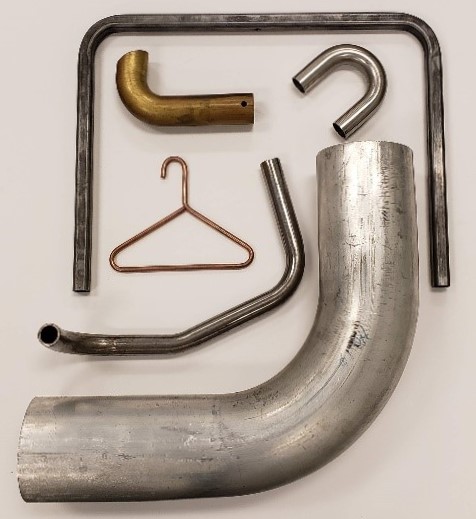|
Need help finding machinery? Submit a Request » |
-
Industrial Dust Collectors
-
Tube Benders / Tube End Formers
-
Metal Working Machinery
- New Arrivals Recently Sold Login About Testimonials Inventory Careers Contact AirMax Filters TubeMax
Fabrication MachineryWelding MachinerySawsPresses & RivetersPress Brakes/ShearsIronworkersRoll Bending/FormingChip ProcessingChip WringersCoolant Filter SystemsChip Crushers/ShreddersUsed Puck and Briquette MachinesView All Chip ProcessingCleaning & FinishingParts WashersBlast MachinesBelt Sanding/FinishingView All Cleaning & FinishingView All Metal Working
BendersCNC Tube Benders/CNC Pipe BendersTube Benders/Pipe BendersRefurbished BendersBendPro MachinesPines Tube BendersVertical Tube BendersEnd FormingTube End Flaring & Beading MachinesTube End FinishersTube End FormersCrimping MachinesTube Branching & Collaring MachinesTube Closing MachinesMore Tube Forming & ResourcesTube Cut-OffsMuffler MachineryTube MillsTube Punching & Perforating MachinesTooling & Repair PartsTools & DownloadsView All Tube Forming -
Metal Working Machinery
AccessoriesAirMax Replacement BlowersAirMax Replacement FiltersTools & DownloadsBooth & Backdraft View All Dust Collectors -
Tube Benders / Tube End Formers
-
Industrial Dust Collectors
-
Tube Benders / Tube End Formers
-
Metal Working Machinery
- New Arrivals Recently Sold Login About Testimonials Inventory Careers Contact AirMax Filters TubeMax
Fabrication MachineryWelding MachinerySawsPresses & RivetersPress Brakes/ShearsIronworkersRoll Bending/FormingChip ProcessingChip WringersCoolant Filter SystemsChip Crushers/ShreddersUsed Puck and Briquette MachinesView All Chip ProcessingCleaning & FinishingParts WashersBlast MachinesBelt Sanding/FinishingView All Cleaning & FinishingView All Metal Working
BendersCNC Tube Benders/CNC Pipe BendersTube Benders/Pipe BendersRefurbished BendersBendPro MachinesPines Tube BendersVertical Tube BendersEnd FormingTube End Flaring & Beading MachinesTube End FinishersTube End FormersCrimping MachinesTube Branching & Collaring MachinesTube Closing MachinesMore Tube Forming & ResourcesTube Cut-OffsMuffler MachineryTube MillsTube Punching & Perforating MachinesTooling & Repair PartsTools & DownloadsView All Tube Forming -
Metal Working Machinery
AccessoriesAirMax Replacement BlowersAirMax Replacement FiltersTools & DownloadsBooth & Backdraft View All Dust CollectorsProper Tube Bending Terminology Part 2: Describing Bent Tubes

A simple bent tube may look basic until you try to describe it to someone without a drawing or a picture. Explanations such as “like a snake” or “candy cane” or “the letter J” can be helpful but are only so descriptive. Below are a few characteristics of a bent part that can assist you in describing it to a supplier, a customer, or even your own team.
Material: What is the tube made of? Copper, stainless steel, etc.?
Shape of the tube: Is the tube round, square, rectangular, or oval?
Wall thickness: How thick is the tubing that you're bending? You can calculate wall thickness by solving the following equation: outside diameter (OD) minus inside diameter (ID), divided by two.
Outside diameter (OD): How wide is a complete cross-section of the tube? The OD is the distance from one outer side of the tube straight across to the other side, measured across the center point.
Inside diameter (ID): How wide is the space within the tube? The ID is the distance from one inner wall of the tube straight across to the other inner wall, measured across the center point.
Degree of bend: To what degree is the tube bent? Lay a protractor on the part to measure the angle.
Centerline radius: In other words, how tight is the bend? The centerline radius is the distance from the inside center point of the curvature to the middle (centerline axis) of the tube/pipe.
Number of bends: How many bends are in the tube? Is it a single-bend part or a five-bend part? While this factor is a simple one, it's often overlooked.
Plane of bends: Is the part rotated out-of-square in a cross-sectional view between bends? If it can lay flat on the ground, it's likely a single-plane part. If it can't lay flat, then it's a multi-plane part.
By understanding and using this terminology, you will be able to properly describe bent tubes. Read part 3 of our tube bending terminology article series here. You can also contact AM Industrial Machinery today for more information on tube bending and our used equipment inventory!
Machine data is best collected from machine manufacturers to ensure safer operation inside of designed parameters. Information above in no way supersedes that data.
View Semi Automatic Tube Benders | View CNC Tube Benders
Home | Blog | About | Testimonials | Inventory | Export | Careers | Contact | AirMax | Login | Sitemap | Privacy Policy | Terms & Conditions | LocationAll Rights Reserved 2025, AM Industrial Group, LLC - Admin Login
Web Development by Alt Media Studios -
Tube Benders / Tube End Formers








